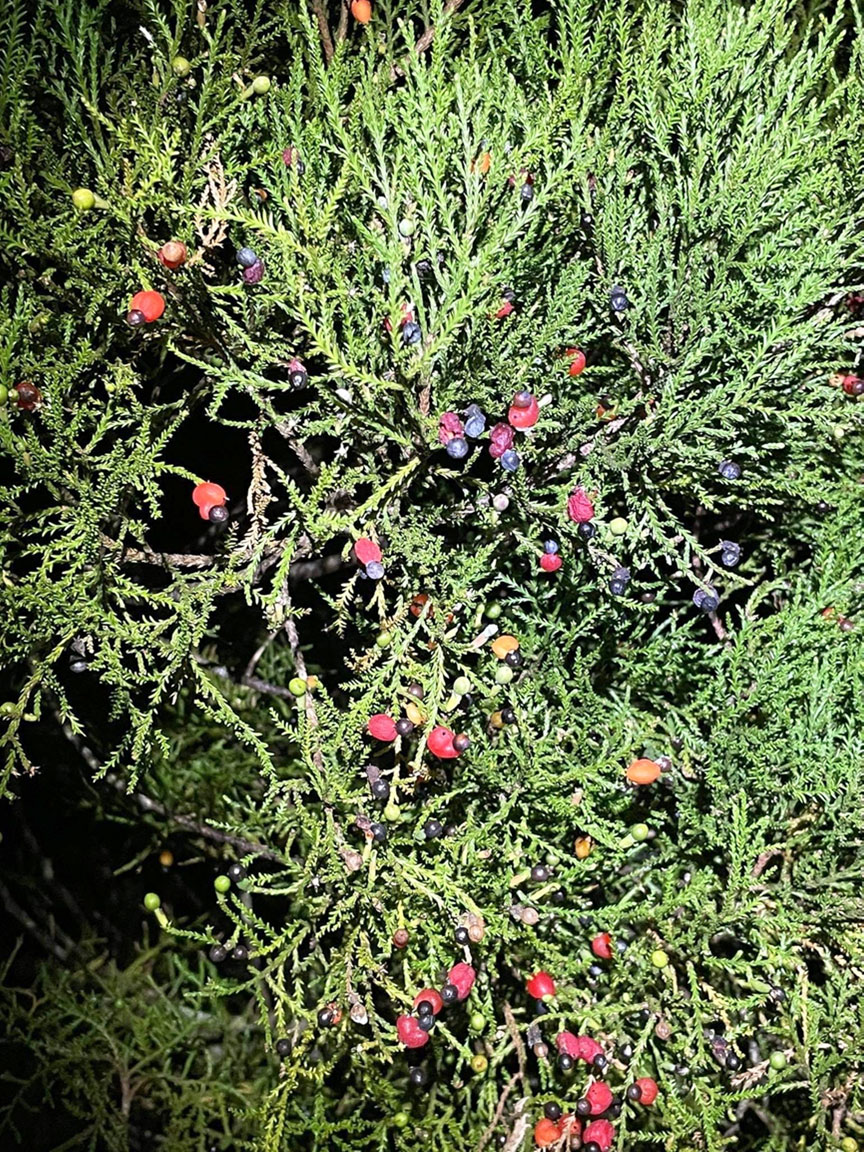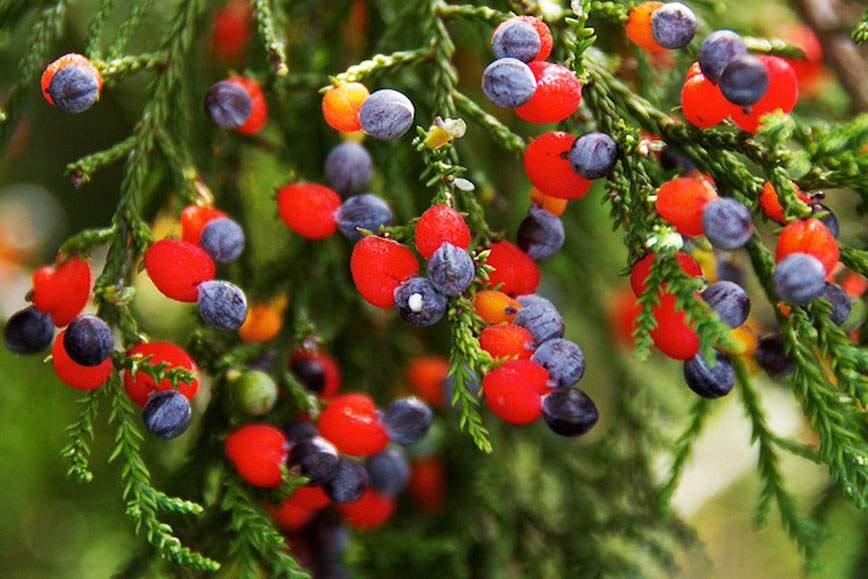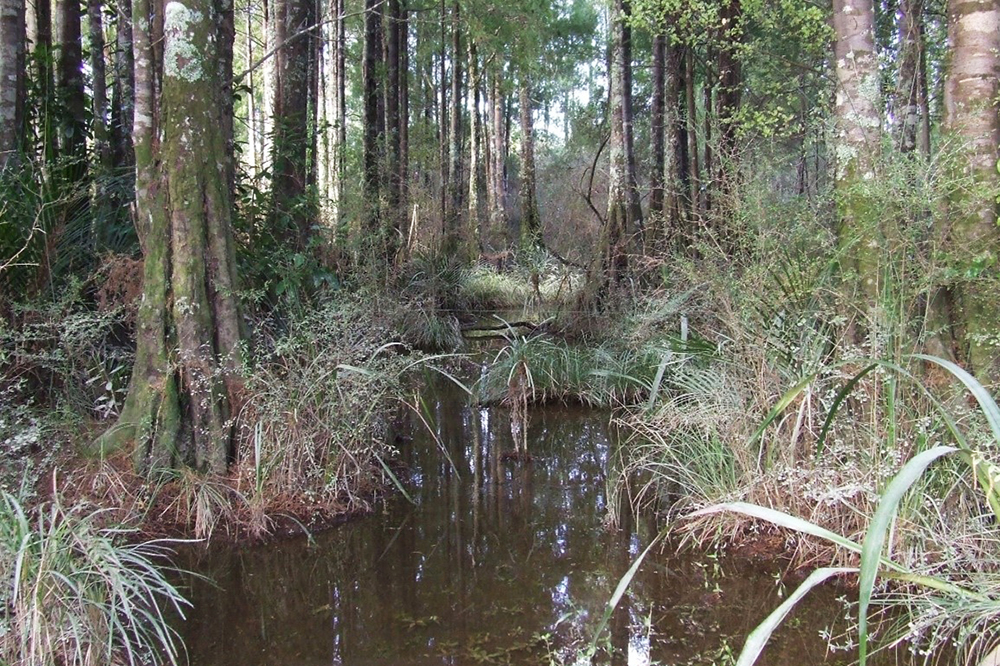Story
Kahikatea berry season
One of the highlights of autumn is the abundance of fruits on the trees of Te Taitokerau, a beautiful and delicious bounty we can all be thankful for. A particularly tempting fruit is the small, orange-red berry of the kahikatea (white pine; Dacrycarpus dacrydioides) tree.
This beautiful native conifer tree grows throughout New Zealand but particularly thrives in wetland and swamp conditions. They are Aotearoa’s tallest indigenous tree, growing up to 60m tall, with a distinctive straight trunk and buttress roots that provide stability in watery conditions. These are ancient trees, the oldest member of the podocarp family, and have survived on our planet for up to 160 million years. They are so ancient that perhaps the first kahikatea berries were eaten by pterodactyls!
The wood of the kahikatea has cultural significance to Māori. It was used medicinally as a tonic for stomach-ache by soaking the wood in water. When burnt, the soot produced by its wood was used as a pigment for traditional tattoos, or tā moko. Early European settlers, meanwhile, found that the timber rotted quickly in water but used it extensively to make butter boxes to ship overseas as the wood is odourless and did not taint the butter.
The berries, known to Māori as koroī, vary in colour from bright orange through red, with a black seed at the top. They are delicious, providing a valuable food source for native species like tūī, kererū/kūkupa (wood pigeon), lizards and invertebrates, as well as for people. Māori harvested the berries from the top of the trees, which was a dangerous job and called for the very best climbers since kahikatea do not typically have lower branches.

Kahikatea at Taikirau Wetland, Maromaku (Photo credit: Samantha Hadfield).
Some years the trees produce such an abundance of berries and seeds that rats and mice flourish. Known as “mast years”, pest populations tend to significantly increase at this time, along with stoats that prey upon them. When the prolific seeds rot or germinate, the plagues of hungry rodents turn to our native birds, lizards, insects and bats instead, decimating populations. In 2019 New Zealand experienced a “mega mast”, a widespread mass seeding event with the biggest beech mast in 40 years coinciding with simultaneous seeding of kahikatea and rimu.
Kahikatea were once found throughout Northland, but the fertile, lowland swamp areas on which they were abundant were ideal for farming, so the trees were extensively cleared and milled. They can be planted as saplings, but groundwater retention is needed, along with fencing to prevent trampling and being eaten by stock. Pest trapping is also important, to prevent pests from stripping the fruit and to ensure that native species can benefit from this important food source.

Koroi berries.
You can celebrate these incredible trees, survivors from the time of the dinosaurs, by taking a walk through one of Te Taitokerau’s forest walks at Ōpua or Puketi and marvelling at the beauty of the trees and their wonderful autumn berries.
Other examples of kahikatea swamp forest can be seen on the way to Dargaville near the Wairoa River, or the Paranui Stream Swamp of the Maungataniwha Ecological District.
More information
Some good examples of kahikatea swamp include:
- Paranui Stream Swamp along Paranui Road, Taipā, is ranked number 23 of the top 150 wetlands in Northland.
- Puketotara/Patukauwae/Te Keene Stream Swamp along State Highway 10, near Pakaraka, is ranked 73 of the top 150 wetlands in Northland.

Kahikatea at Frith Road Dairylands Wetland, Dargaville. Number 63 of the top 150 wetlands in Northland.
